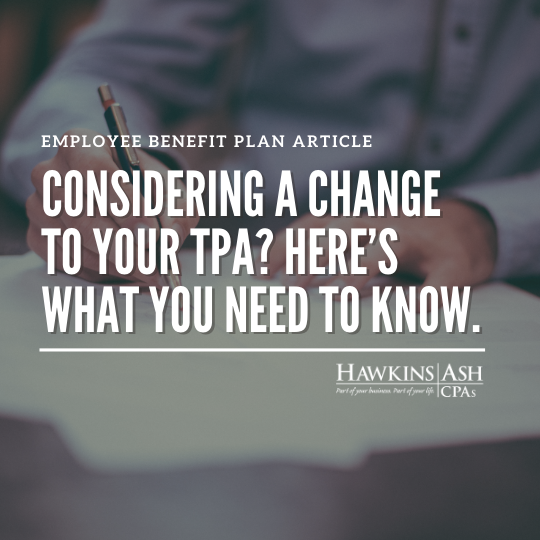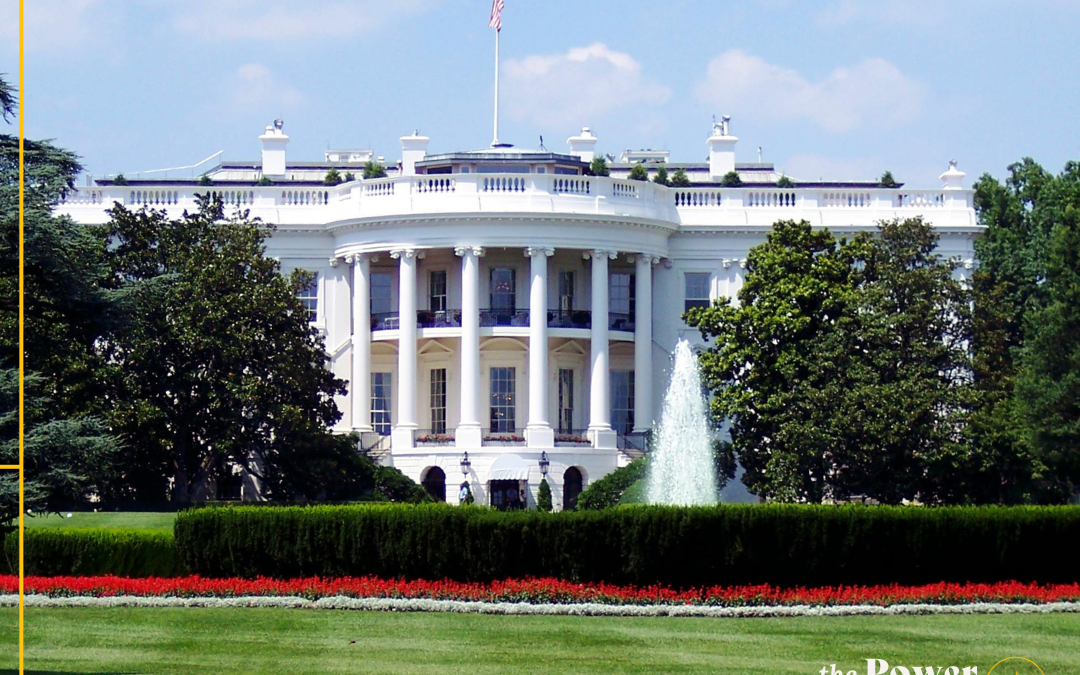There are many reasons why a plan sponsor may want to change its third-party administrator (TPA). Perhaps the fees are too high, or the TPA is making errors. Maybe your contact person is always changing because of high turnover or you’re just not happy with the amount or type of communication you are receiving. Perhaps the TPA is mostly reactive and rarely offers any proactive suggestions. In any event, there are several important considerations when deciding if it’s time to change your TPA.
Determine what authority is required to make the change. Do you need a board resolution to terminate contracts with your current TPA or to enter into contracts with your new TPA? You should also determine how you will go about searching for your new TPA. Does your organization have established RFP processes?
Figure out what you want. Before you start looking for a new TPA, your organization should determine what services are considered important to you. If there will be a change to the responsibilities (either you are taking on more responsibilities or you’re shifting more things to the new TPA) a transition plan should be established. Make sure these services fit your plan’s needs before making decisions or signing service agreements.
Participant access and options. Determine how the change in TPA affects your employees’ access to their accounts. What changes will there be to contribution and distribution processing? What about web access? Will there be significant changes to your participants’ investment options?
Your plan’s participants will have blackout dates. Once you begin the process of making the change there will be a period of time where the plan’s participants won’t be able to make any contributions, distributions, or changes to their investment elections. This “lets the dust settle” before the actual asset transfer takes place to help ensure that all the assets are accounted for properly. Your participants must be notified of this blackout period, as well as the change of TPA, the effective date of the change, and the new contact information.
Did your current TPA provide your plan document? If you are using a plan document from your current TPA’s volume submitter plan, you may be required to change your plan document by your new TPA or they may charge additional fees if you want to keep using the old one. If you do change your plan document, be sure it fits the way you run your plan. A small change to the definition of compensation can result in a big corrective contribution if the new definition of compensation is not followed.
Are your records complete? The responsibility of maintaining the plan’s records rests with the plan sponsor, and your new TPA will need complete records to undertake the administration of your plan. Once the current TPA is terminated they have no duty to provide your new TPA with any records and oftentimes will charge additional fees for records transfers. Before terminating your current TPA make sure you identify which records will need to be transferred and in what format. You must work with both TPA firms to ensure your plan data is moved correctly and completely.
Much of this transition will be governed by your service agreement with your current TPA, and every TPA will react differently to being terminated. Having a plan makes your transition much smoother and ensures there are no gaps in oversight or compliance. Be sure to contact us with any questions.





